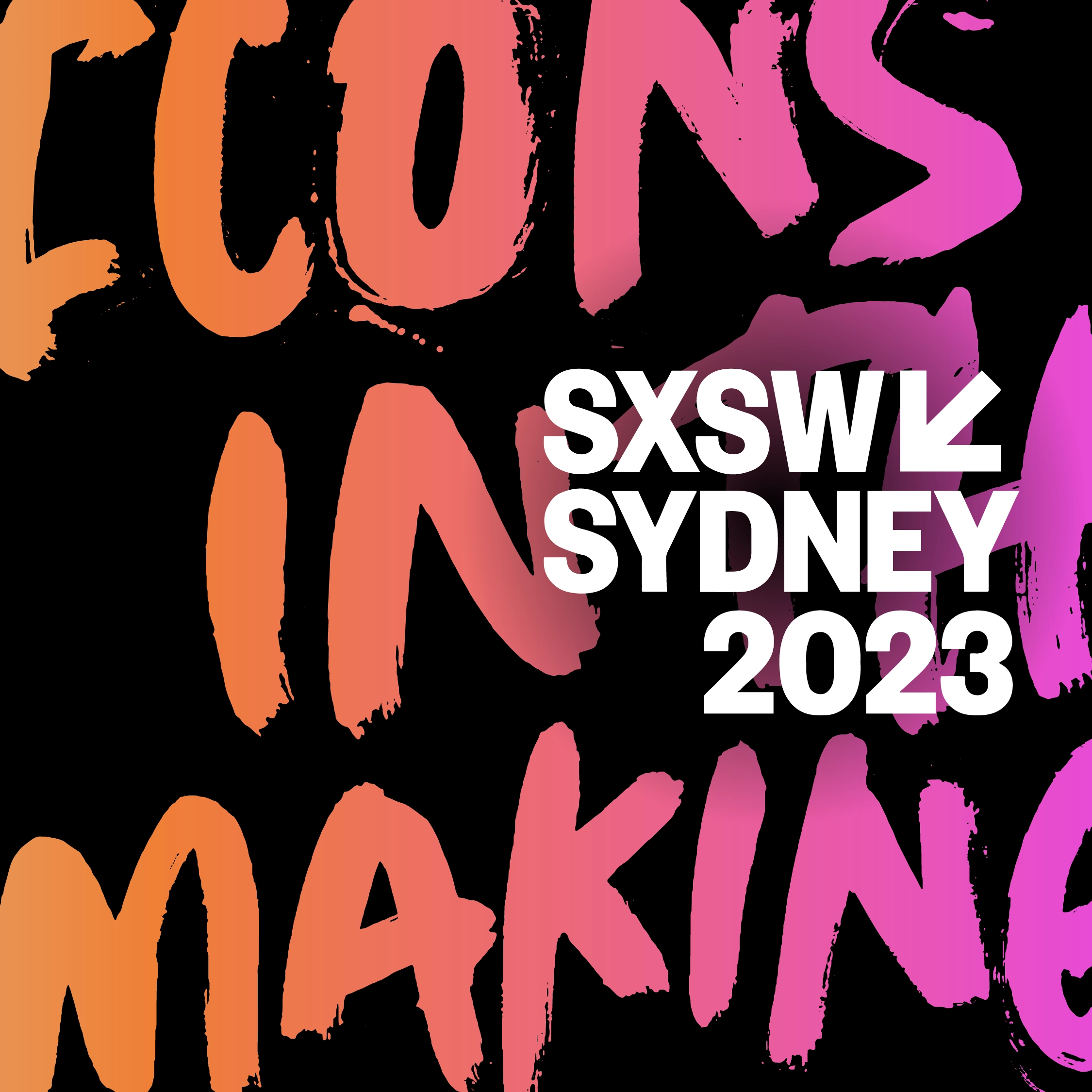October 16, 2025
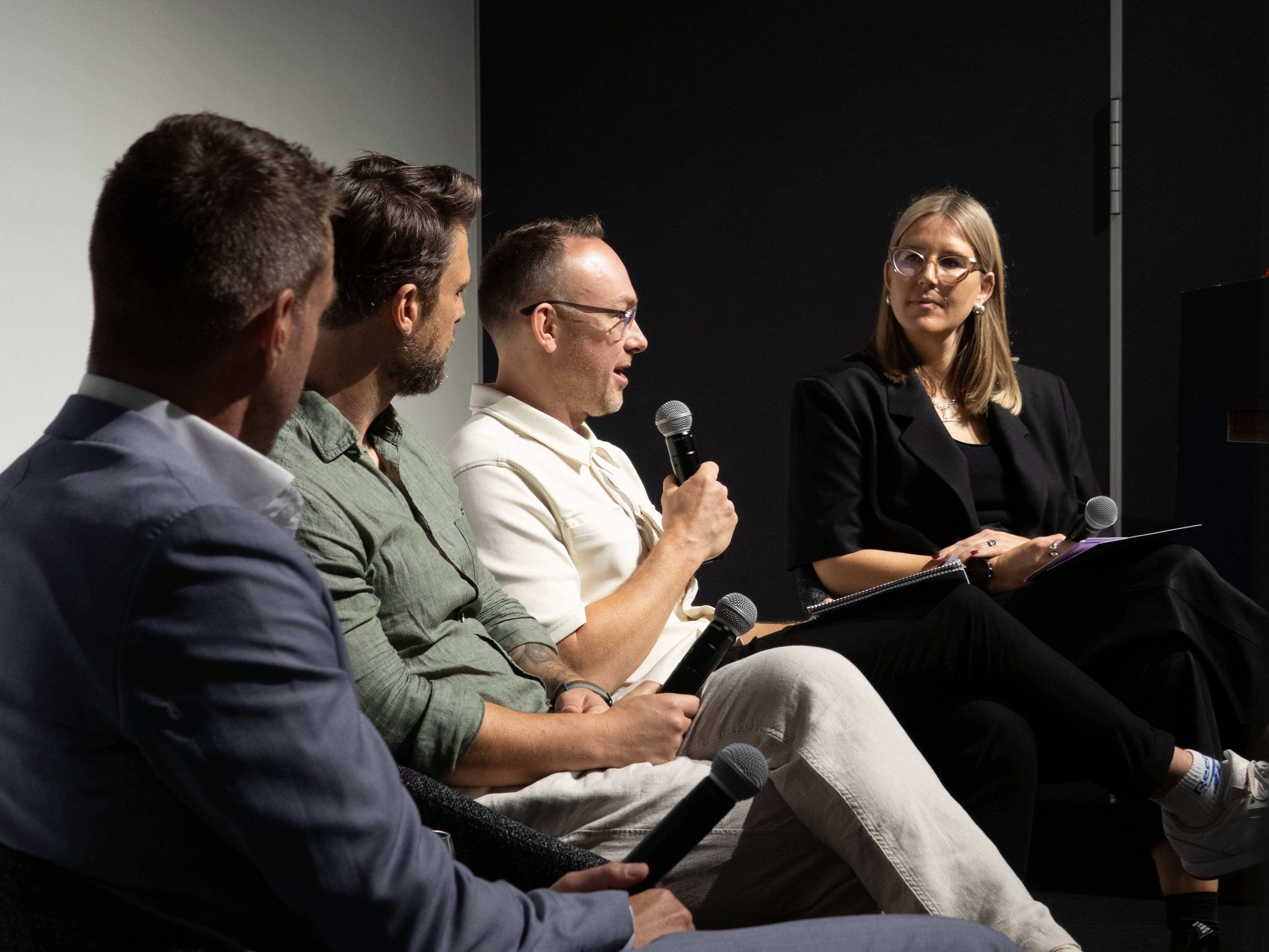
As Australian brands continue to expand their influence and footprints across international markets, lessons in how to navigate the global growth journey abound.
At this year’s SXSW Sydney, Lippincott took to the stage alongside industry leaders at three uniquely Australian brands, each with a growing global footprint. In this session, live from SXSW Sydney, Ingrid Kool-Clarke Design, Partner and Creative Director at Lippincott APAC sits down with Joel Moran, International Vice President of Marketing at Afterpay, Benjamin Grindlay, Chief Marketing & Communications Officer at Adelaide University, and Roddy Campbell, Director of Partnerships and International Business at Tennis Australia (Australian Open) for a dynamic conversation on what it takes to build and sustain powerful brands with global audiences.
We explore the unique challenges and opportunities Australian brands face, from navigating cultural nuances and consumer behaviours internationally to the integral role ‘Australia’ plays in brand storytelling and experience.
Read on for the highlights:
- The importance of balancing global brand consistency with local cultural adaptation
- Leveraging a strong sense of place (Brand Australia) as a strategic asset that is nuanced per market
- The necessity of inclusiveness and authentic diversity as pillars of global brand success
- Long-term investment and patience as key to making international expansion pay off
- And the critical role of rigorous local market research in tailoring brand narratives and customer engagement
Ingrid Kool-Clarke: Thank you all for joining us this morning. There's still a few people coming in, but great to see the good turnout. I'm Ingrid Kool-Clarke, Partner and Creative Director at Lippincott. We're a global brand marketing and experience consultancy based here in Sydney and across the globe. Since the 1940s, we've been helping companies tackle their most complex brand challenges, and along the way, we've been really fortunate to partner with iconic brands such as Starbucks, Korean Air, and Nokia, all brands with rich histories that have successfully expanded on the global stage. Fittingly, today's session is all about building and sustaining powerful brands internationally, but not just any brands, three uniquely Australian brands, each with a growing global footprint. So who have we got joining me today? We have Joel Moran, he's the International Vice President of Marketing at Afterpay. We have Ben Grindlay, Chief Marketing Officer at Adelaide University. And then finally, we've got Roddy Campbell, Director of Partnerships and International Business at Tennis Australia. So together, today, we're going to explore some of the challenges and opportunities that Australian brands face—whether that's navigating cultural nuances, diverse consumer behaviors abroad, or harnessing the authentic power of brand Australia in storytelling and customer experiences. So let's get into it. Let's start with a bit of context and scene-setting for our audience. Ben, can you talk to us about your brand's place globally today, the key markets you're looking at for growth, and some of the challenges that you've experienced in the process?
Benjamin Grindlay: Thanks, Ingrid, and good morning everyone. Yeah, Adelaide University is a bit of a paradox. We're brand new as of 2026, but we're also 180 years of history. So it's the coming together of the University of Adelaide, which is the third oldest university in Australia, a sandstone institution, top 100, and the University of South Australia, which is about 30 years old and quite an entrepreneurial, vocational, innovative institution. So it is quite a big deal in the higher education sector generally. For us, it is really about being able to compete as a global brand. That's presented some wonderful opportunities to launch into some of our existing markets with a compelling offer and a real, comprehensive, and differentiated Group of Eight institution. But there are also a lot of challenges. With institutions, you have to ensure that when you're recruiting, particularly from some of our key global markets in Asia, across Europe, and the Middle East, there is credibility in what we're doing. To be a new institution in that space is tricky, so we're having to tell the story of we're not starting from scratch, but we're an institution that's starting from strength. So I guess at a top level, Ingrid, that's our context at the moment. There are wonderful opportunities to launch into these markets, but we're really having to do that as a new brand, where credibility, heritage, and history really matter for a lot of the markets we're entering into.
Ingrid: Yeah, thanks, Ben. Roddy, are you able to give us a bit of context on your journey so far into global domination?
Roddy Campbell: Not quite there yet? Yes, slightly. It’s a very different business, but the Australian Open, as I'm sure many are aware, is one of the four Grand Slams of the world. But unlike the others, we don't have a huge metropolis like Manhattan or Paris on our doorstep. So we have to work pretty hard to get our brand out there and be relevant around the world. We are truly global. If you just look at where our content is consumed, 85% of the broadcast is offshore, outside of Australia. And when you add in social content, it's 95%. So we're not really an Australian business; we just take place in Melbourne, but our audiences are around the world. Our business is more or less three revenue streams: ticketing and hospitality, sponsorship, and media rights. So when you break it down, two out of three of those are driven by international. Therefore, we really need to spend as much time as we can in the markets outside of Australia that are driving that consumption, which ultimately translates to revenue for us. It's been a journey. We're more global now than we've ever been. But it's challenging to get out there from Melbourne. We're a long way from everywhere, but just trying to show up in those key markets makes the difference and drives relevant campaigns that resonate. It doesn't always work, but we've captured a few learnings to fine-tune our approach in the next few years.
Ingrid: Thanks, Roddy. Joel, can you tell us a little bit about Afterpay and the journey so far?
Joel Moran: Sure. Personally, I've been working with Afterpay for five years. As many may know, we were founded right here in Sydney, just over 10 years ago. Since then, we have expanded to the US, Canada, the UK, and we're in New Zealand, of course. More recently, in 2022, we were acquired by Block, so we became an American company. We have other brands, Square and Cash App, a huge banking app in the US. The key thing for us is that when we were first founded, it was all about our brand promise of creating fairer financial products that challenge the status quo and help create a world where everybody can win, really. That means not only our consumers but especially our merchant partners and society at large. In moving to different countries or expanding into different countries, even with Block, it's about making sure that that brand promise is true no matter where we go. In terms of our unique challenges, our business model is a two-sided network. We have the merchants who are our customers and we have our consumers. When we go into a new market, it's first and foremost about getting our merchants on board and helping them to grow their businesses, while developing our consumer base and nurturing that consumer base. This is all in the backdrop of every country having a unique situation, different competitors, different regulations, and different merchants. That all has to be taken into consideration, which is why every country is at quite a different phase of their journey.
Ingrid: That’s a good segue because I wanted to ask a little bit about the cultural nuances and consumer behaviors across different markets. Joel, you mentioned, and a lot of us know this already, that Afterpay was the pioneer in the buy now, pay later market in Australia, yet the concept was quite well established in other markets. How have you navigated that difference, and how might it affect consumer behavior? Does it change some of the challenges that your customers are trying to solve?
Joel: I think that no matter what country we go into, we enter it with a very similar or the same brand promise and a similar value proposition, and we have actually expanded that somewhat over time. It’s definitely been about working with our merchant partners and developing our product to go to market with something that meets the brand promise. But as you've pointed out, we have some stock differences, like in the UK where we’re actually not called Afterpay; we’re called Clearpay. What remains true is a lot of things about the brand—how it looks and feels, the imagery, a lot of the product, and the promise and delivery. We definitely try to use global platforms, global campaigns, and playbooks, but customize and target those to individual regions and audiences considerably.
Ingrid: I mean, that’s a necessity. Ben, it’s funny. I have a 150-year milestone here, but you said 180.
Ben: I was being kind and adding the University of South Australia.
Ingrid: Okay, I was like, wow. That’s amazing! What’s interesting is the fact that the University of Adelaide has just celebrated that milestone, along with the announcement of the merger, like you mentioned with UniSA. How have you brought local communities along with you while still attracting that global audience? You touched on this slightly, but it's more about that local community and how you brought everyone together.
Ben: Yeah, it's such a great question. I think I gained a lot more gray hairs during that period. Imagine you are just about to launch the merger of two institutions, one particularly iconic in the state. It's the largest employer; higher education is the biggest export in South Australia. At the same time, the state government is really behind it and pushing it. You've got 150 years of the third oldest university, celebrating that with generations, and the University of South Australia really being part of the community rather than being apart from it. There’s pressure on how to enjoy and celebrate this 150 years while telling your community that, in their view, it is coming to an end. That was stressful. On one hand, we had this calendar of events and true celebration, reflecting on everything we've done—from the first university to admit women to the first university to put someone in space from Australia. So it was difficult, but we tried to bring people with us on that journey by being honest and transparent with our communities, making it clear that this wasn't an end, but a new beginning in what we needed to do. The university isn't a logo or a tagline; it is part of the fabric of the state. That legacy will continue. Honestly, a lot of alumni weren't thrilled with it. They felt their brand was being messed with and their history was changing, but we handled that quite well. We were evidence-based and led in what we did. We tried to be transparent with those communities that we engaged with, telling a story about where we were going and why. We wanted to be an anchor institution for the state, to bring Adelaide to the world and the world to Adelaide, which was part of the state’s prosperity. It was difficult to authentically celebrate those 150 years, but I think we did. At the same time, we needed to launch a new brand to build a pipeline of international students coming through. So yes, it was stressful, but caffeine and stress kept me trim!
Ingrid: It was great! You’re opening your doors January 26, right?
Ben: That’s right. We kick off January 2026, but we’ve been in the market for a couple of years now—recruiting international students, domestic students, our research partnerships; all of those things matter. So I've had to wear multiple hats during this period.
Ingrid: Roddy, you mentioned the brand campaign “Hits Different.” You said it resonated quite well in some markets, but not all. Can you tell us a bit about what you learned from that experience and the ultimate solve?
Roddy: Sure. Hopefully you've seen the campaign. We went on sale for the AO last week. Usually, a tennis tournament changes its tagline every year. We worked with BMF on this positioning of “Hits Different” three years ago, which has really worked. The marketing team has evolved that campaign on different levels, and it's just gone live in Australia. It really encapsulates what the AO is about. You have to see it. It’s not just tennis. It’s quite disruptive; there's music, tech, food—it's got a bit of everything. Those two words really encapsulate what we're about. The agency tender was a shoo-in as soon as we heard that phrase because it nails it. Now, does that translate to every language? Not at all. It’s a bit of a colloquialism, a Gen Z phrase that has gained momentum here, but it doesn’t mean anything in Japan, Germany, or China. We love the campaign, but we had to tweak it. We’re lucky to have broadcasters with whom we create content together, so we could test and learn without big media spends in key markets. We kind of evolved it. Much of the imagery stayed the same, but we changed the words. About 50% of the markets carried “Hits Different,” and 50% had their own similar phrase. We got through that with a bit of testing and learning. I think it's also less about one Hero campaign in marketing these days. Influencers are key; having human voices tell your brand story has been really effective for us. We encourage key opinion leaders in key markets to pick up and run with a set of assets and positioning in their own style. It’s a symphony of activity. There's a Hero campaign, broadcaster content, micro and macro influencers, and brand partners doing their own thing in the region. So the CMO's job is less about shouting with a Hero campaign and more about coordinating all those activities and fueling the fire. We’re reactive, using lots of different asset types, whether it’s match footage or collaborating with Australian influencers or imagery from Visit Victoria. We have a toolkit, and we're quite nimble in feeding different markets so they can communicate through their channels. It’s a smorgasbord of activity that we're trying to make less chaotic and a bit more choreographed in how we work with each market.
Ingrid: I guess it all stems from the concept that the AO is a different experience, right? “Hits different” kind of carries through everything, like the phrase “hits different” is one that doesn’t necessarily land in those other markets.
Roddy: Yeah, exactly. Some markets are more focused on tennis. Tennis purists don’t necessarily care about the apparel or the other aspects of having a one-point slam. We don’t want to isolate the traditional audience that wants to see the best tennis players in the world. Certain markets prefer a pure tennis approach, focusing more on player imagery and less on people having fun. When we market it as a bucket-list holiday worthwhile for coming to Australia, we highlight the beaches—even though the beaches in Melbourne are quite lacking compared to Sydney. We try to tell the whole story of what a holiday here represents.
Ingrid: I have to acknowledge looking around. We have three white men and me—a white Australian on stage. I want to ask the group, maybe you can kick off, Joel. Moving into global markets, how do you prioritize inclusiveness and create diversity in your brand identity as you expand?
Joel: Yeah, good question and good observation. First of all, I’ve loved being here at South by Southwest and seeing the amazing diversity across all the different panels, which is awesome. Personally, and for our organization, having diversity in our company is really important; it’s the way to grow, and I think we're doing a relatively good job at it. I run a small marketing team, and we manage marketing for Australia, New Zealand, the UK, and Canada. The US runs a little differently. More importantly than recruiting for nationality or gender is actually about having a global mindset and perspective. That doesn’t necessarily come easily, especially if marketers have mostly marketed locally; I’m still on a journey with that myself. The only way to truly get that is by exploring, observing, and, of course, listening to our customers. Our organization has a significant focus on insights and research, with a fantastic insights and research team. When trying to create effective marketing strategies and creative platforms that work across different regions, we're obsessed with researching within the markets as much as possible. I often see insights I would never have considered. A person from a different background in a specific country might interpret our message in a way I didn’t anticipate. As we do this more frequently, our global mindset and awareness grow. You can’t be more focused on the customer through those insights.
Ingrid: Exactly. Roddy, can you talk to us about inclusiveness and how you create a diverse brand identity with your work?
Roddy: It’s a core part of our DNA. Like Joel, we’re trying to be the most inclusive sporting event in the world. The AO has First Nations Day, Pride Day, and various all-abilities pathways. We want everyone to experience our brand, and that is part of the story we’re trying to tell on the global stage. The actual communication of our value proposition carries a message of diversity. When talking about globalization and regional issues, yes, I’m a white male, middle-aged, and just about hanging on to it. I’m probably in the minority in the teams we’re working with in those regions. The team in China is made up of young Chinese women driving the business there. Being respectful and curious about the cultures you’re doing business with is key. Echoing what Joel said, if you don’t have that global mindset, it’ll be clunky when conducting business. Assume nothing; ask questions and research before entering those markets. That demonstrates the diversity and inclusion principles we want to learn and embrace within the culture. In all of my teams that travel, we try to educate ourselves on cultural norms, which seems to flow better.
Ingrid: Joel and I were discussing earlier today how being on the ground and absorbing culture is particularly important.
Ben: Other than probably accepting more than I definitely am deep into middle age! Look, I believe that age doesn’t matter. For a university, it’s baked into expectations. Reflecting, we represent about 150 different countries across the university staff, and that is by design. Even in our marketing team, we have people in different countries embedded and often coming back. Most of the time we get that right, but we don’t always interpret it accurately. Sometimes we overthink it and should just rely on the diversity within our team. We need to recalibrate how we represent our diversity rather than performatively.
Ingrid: Actions speak louder than words, absolutely. Moving the conversation to Brand Australia and its role in storytelling. Roddy, it'd be interesting to hear about the Australian Open's status, which you touched on, and the fact that most of the work is offshore. As a world-class event and travel destination, how would you tailor your storytelling to those various markets?
Roddy: To recap, influencers are a big part of it. In every market, we try to find between 10 and 50 influencers who might join the AO—working with a broadcaster, TikTok, or doing it ourselves. That's one tool we use. We also do events in local markets, depending on the market. The West Coast of the US is crucial for us; Americans love their tennis. There's a lot of money in Silicon Valley and LA at the moment, so we show up at Palm Springs or San Francisco for travel marketing. We emphasize Australiana there; Americans love the Crocodile Dundee vibe! There’s a fondness for Australia. In China, our biggest overall market, which comprises 40% of our audience, we really have to take the AO to them. It's less about Australia; they want it to feel like the China Open. We create events in their market, with amateur tournaments that run all year round under the AO brand. It’s called the AO but feels like an Asia-Pacific Slam. This approach has drawn investment from partners in the region who want to associate with a big APAC-based event rather than just Australia. One strategy is to draw people in with Australian messaging, and the other is to make it feel Asian. Those are the two biggest markets.
Ingrid: That’s super interesting. Do you use a slightly different message while it’s still called the Australian Open?
Roddy: Yes, we often refer to the AO, as it’s getting mass recognition now. The logo is very consistent and recognizable. We rarely say the Australian Open these days!
Ingrid: Fascinating. Are there specific international markets or groups where the Australian roots really do benefit?
Joel: Yes, it’s interesting to speak to this group over breakfast. We’re quite different in how having Australian roots benefits fintech. Some awesome Australian companies have emerged, like Airwallex and WiseTech. We’re known for creating innovative and trustworthy products and services. However, from a consumer perspective, they actually want you to feel local, that you’re built for them, that you have a team there. When it comes to regulators, you have to build relationships with them, feel that you are present, and maintain a local setup. For us, the flag doesn’t travel as much; it’s more about ensuring our customers, including our merchants especially, feel we’re more local.
Ingrid: From a consumer's perspective, would they care that it’s Australian, or is it more about being trustworthy?
Joel: That’s exactly what they care about. They want to feel understood; it’s a brand created for them. For example, in New Zealand, we are the biggest buy now, pay later brand, and they want to feel it's a local company built for their needs.
Ingrid: That makes a lot of sense. Ben, this might be a very different response for you, but how does Brand Australia play a role in your marketing at the university?
Ben: It’s critical, but it’s really a lens rather than a label that we take to market. It’s about what Australia stands for and the proposition within that. In different markets, it can mean different things. For example, in China, it’s about rankings and reputation. In Southeast Asia and South Asia, it might focus on lifestyle, work, study rights, and safety. Overall, the Australian lens is important. Many key markets value our partnerships and research activities. Particularly in Adelaide, it's sizable enough to have everything needed but small enough for connections across multidisciplinary research topics. At a macro level, Australia speaks to that about our size. In the Adelaide context, we emphasize the best things about it, distinguishing ourselves from Sydney and Melbourne, and positioning it as a positive.
Ingrid: Does it interchange between Brand Australia and Brand Adelaide?
Ben: Yes, it’s interesting. In Adelaide, for many markets, people have heard of Melbourne and Sydney, but not as much about Adelaide—just the Shiraz we have. We need to do destination work. We work closely with Study Adelaide and tourism to build that in. Much of the tourism dollar that comes into South Australia is due to education, so we want to leverage that we are Brand Australia, but also be quirky and different to cut through.
Ingrid: Moving more into managing global brands, Joel, you mentioned having Cash App in the US, Clearpay in the UK, quite a variety. How do you ensure brand cohesion and manage your portfolio despite those differences?
Joel: It’s definitely a challenge, as there are efficiencies in keeping things similar, but they’ve become quite different across countries. For instance, Clearpay in the UK has a different name, but everything else is similar. The logo is basically the same, and so is the color. The stark differences are found in the US, as Cash App has 60 million monthly users, which is double Australia’s population. One of the key advantages of Afterpay joining Block was the opportunity to combine value propositions. About a year ago, we allowed all Cash App customers to access Afterpay within the Cash App banking service. There’s still a standalone product, but it’s now available to those almost 60 million customers, increasing our customer base and merchant value proposition. We made significant brand changes, such as the Bondi mint color in Australia shifting to Cash App green in the US. So the branding is diverging more in the US, while we keep it consistent in other countries. The red thread is the brand promise and company mission through all products and services, which is fundamental.
Ingrid: And is that influence from Block coming down across the portfolio, or is it segmented?
Joel: Block chose to acquire Afterpay because our values already aligned. We share a mission of economic empowerment and creating financial products that improve the world. Our CEO is Jack Dorsey, who co-founded Twitter and is a genuine innovator. The brands we know support various positive initiatives—like Bitcoin and tools for musicians through Tidal, which is very different from Spotify. There’s genuine alignment in what we’re trying to do, and while we’re still myth-busting to some extent and get some flack, we stand with pride in offering a better alternative to traditional credit.
Ingrid: I’m conscious of time. It’d be great to hear advice from you, Ben. What words of wisdom do you have for any Australian brands looking to go global?
Ben: No pressure! From our perspective, it’s been a unique journey. In some ways, we were already a global brand, but through the merger, we reset. It’s key to ensure that in our local space, we really know what we stand for, that there’s buy-in and purpose, and that we go into the global market with credibility while maintaining a global outlook. In our category, particularly for older institutions, there’s a lot of crests and Latin. Moving away from that was challenging for our communities. We looked globally to understand what contemporary universities look like, and not many have crests or Latin. If you want to grow and partner in those markets, you must take that leap of faith. We engaged with communities to elevate credibility, and being able to talk confidently about what we’re doing and why we’re competing globally is very important. The lesson is knowing where you come from and being bold enough to leave some aspects behind to attract markets you want to engage with.
Ingrid: Ultimately, you only get one chance, so you may as well go big or go home?
Ben: Yes, you could play it safe, but then you're not fulfilling the promise. That promise was to be a differentiated Group of Eight university, and we do get that chance. Many brands would love to leave the past behind. Being a historic institution is a double-edged sword—great for heritage but seen as staid. We hope to have all the benefits of tradition while engaging with markets critically and excitingly, which will set us on a good path. It’s exciting—good luck!
Ingrid: Roddy, can you share advice for any brands preparing to go global?
Roddy: Not many brands have an international sporting event to relate to, but I’ll share some common learnings. The first is persistence. We launched an office in China nine years ago, involving salaries and retained agencies; everyone questioned that decision. There was no return for the first three or four years, and it felt like a long slog. Now, nine years later, we have seven or eight partners, a viable business, and we’ve become culturally relevant—40% of people say it’s their favorite Grand Slam. It paid off, but it took over five years for tangible signals of return. You’ll face pressure about returns immediately, but remember it can pay off in the long run. Look for indicators showing you’re on the right path, even if they don’t yet show tangible returns.
The second piece is simplicity. Complexity can be a silent killer to a strategy. Not every sub-brand will thrive, not every initiative will translate, and not all markets are worth exploring. Find data points that truly guide your navigation and ensure your projects align with market opportunities 39:08. We’ve made big investments in India that didn’t pay off and must approach it differently going forward. Half the battle is choosing what not to do.
Ingrid: Yeah, being thorough in your assessment before jumping in makes sense!
Roddy: Abraham Lincoln said something about sharpening your axe—spend more time sharpening it than actually chopping.
Ingrid: Exactly! Finally, Joel, any advice for brands looking to go global from your experience?
Joel: From a technology product viewpoint, it may seem like a quick win, and going global can feel easy with current technologies. However, think carefully about your ability to deliver a consistent or acceptable customer experience addressing the customer problems you aim to solve. Rushing in without research can cause issues. You might find the product-market fit isn’t there, or be blindsided by regulations you didn’t foresee. Alternatively, you may compromise the experience for your existing markets, draining resources away. Don’t take shortcuts; do due diligence and make thoughtful, pragmatic decisions to minimize risk.
Ingrid: I’m conscious of time. I think that should be it. I’m sure a lot of you have sessions to attend. We don’t have a Q&A, but I’ll throw you guys under the bus. If anyone wants to come up and talk to Ben, Roddy, or Joel, please do! Thank you all for your time, and thanks to the panelists.
Ben: Thank you.
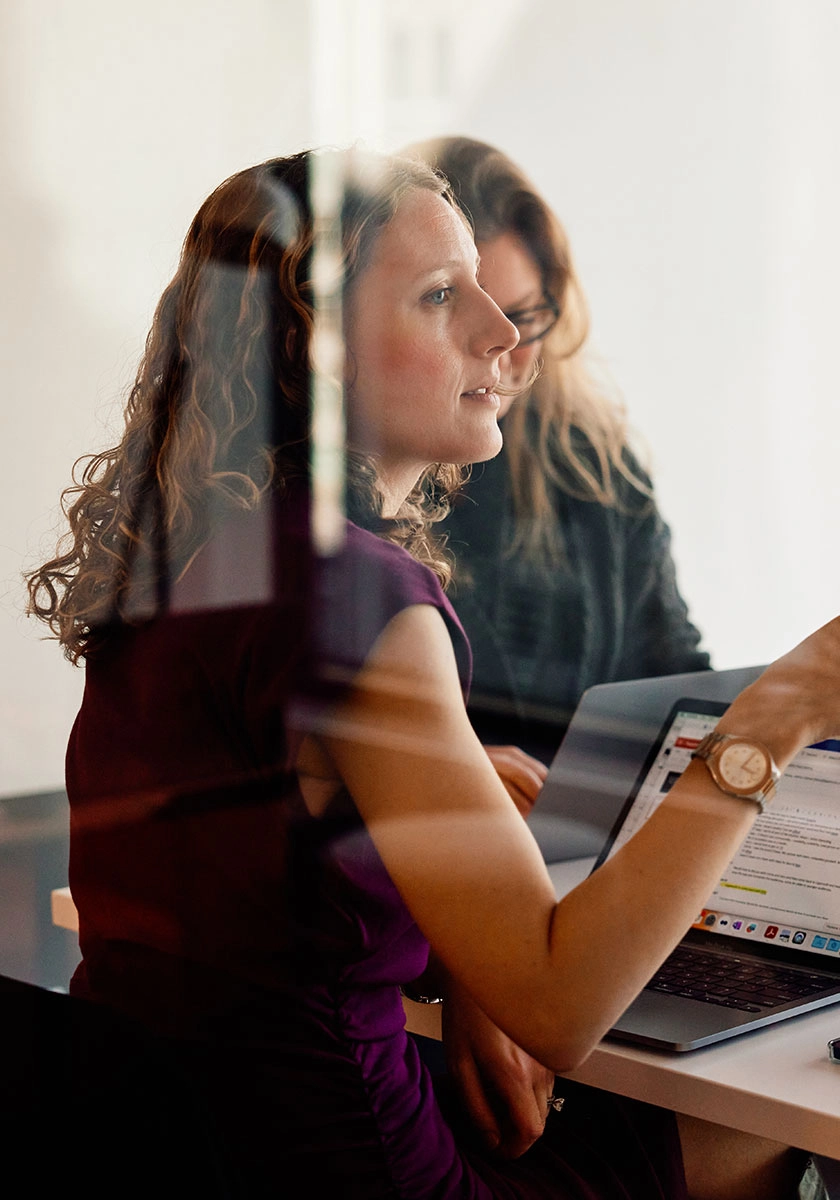

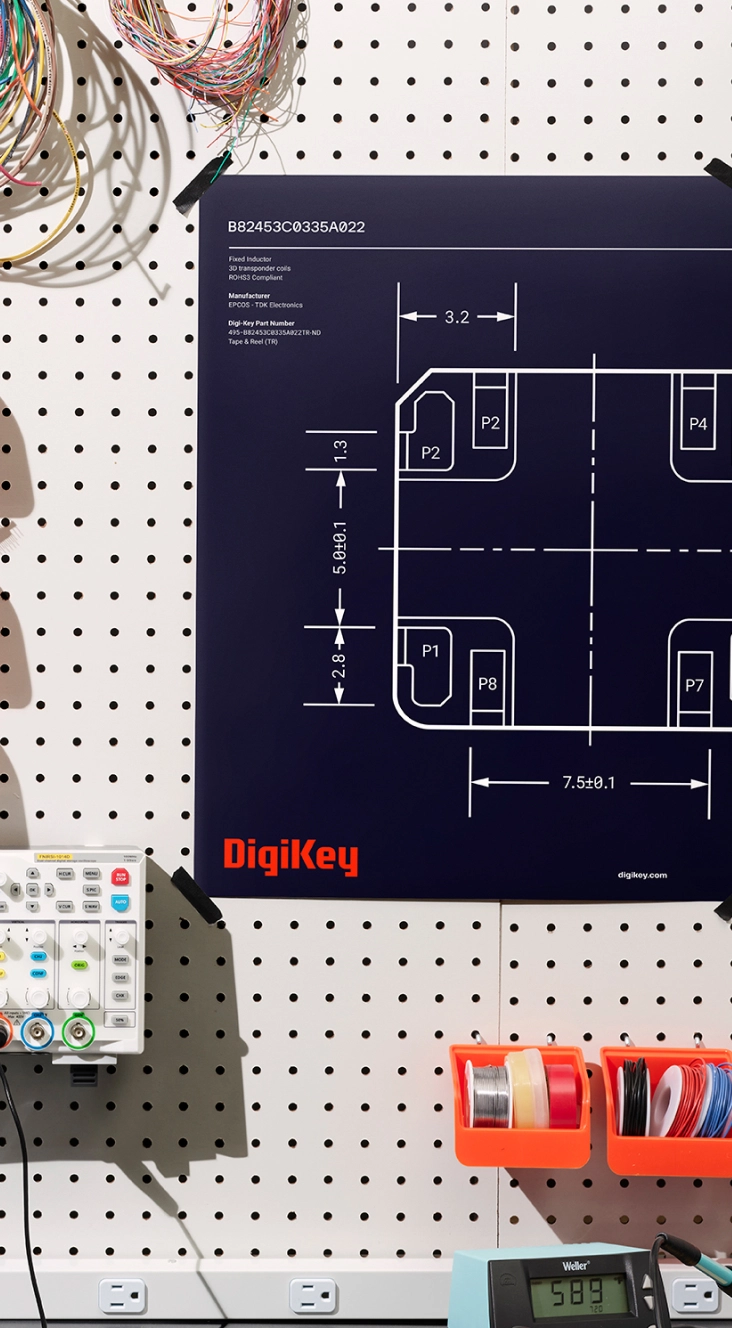
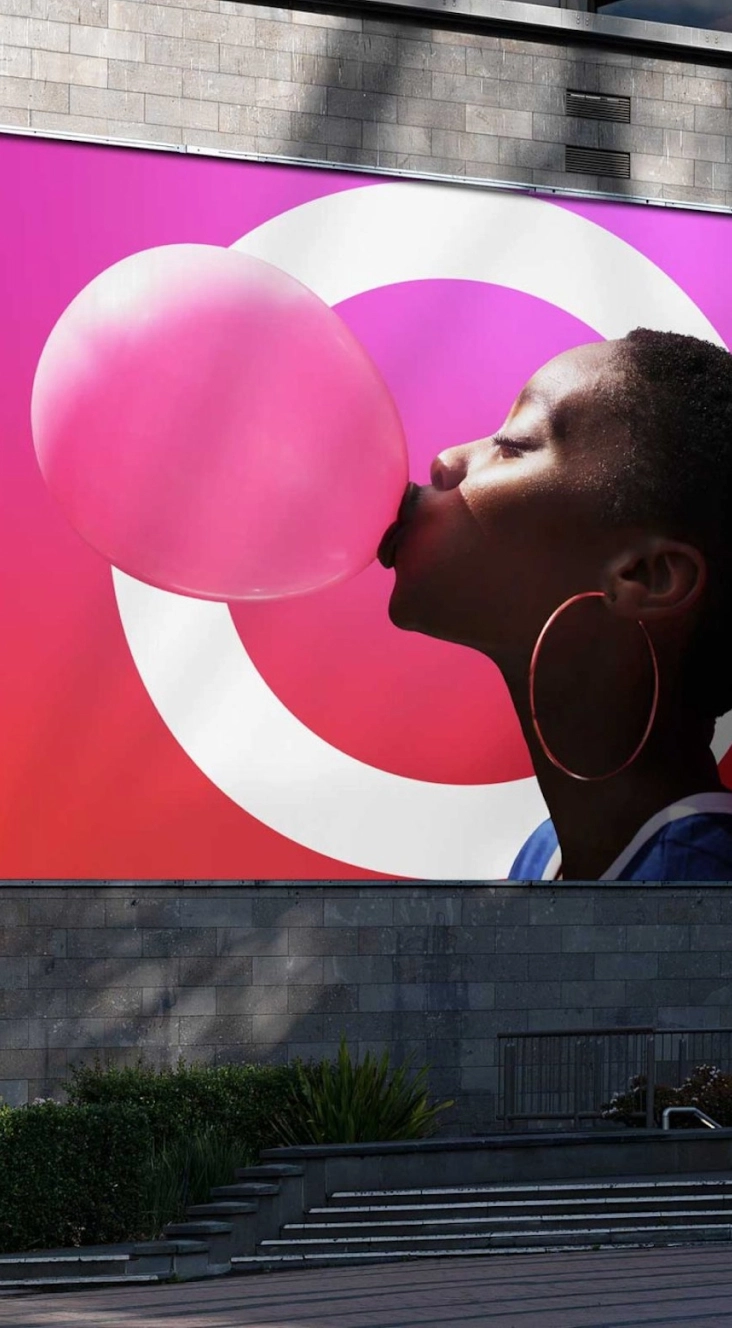
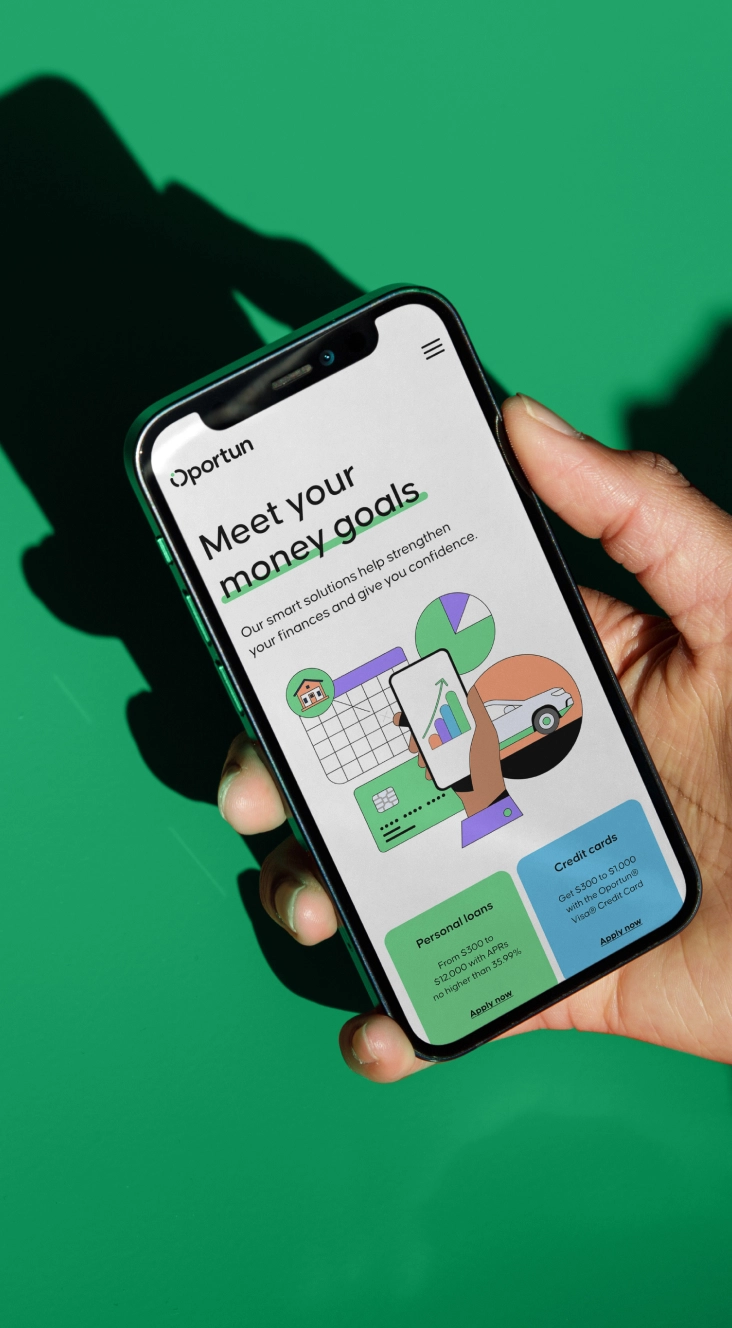


?fmt=webp-alpha&qlt=100)
